Why do we sample habitats?
We cannot count every single creature or plant in a habitat so we use special equipment to investigate a smaller area.
Identification key
Features of an animal that help it to survive in its environment are called
adaptations
What are 2 ways we can reduce air pollution?
Use clean energy from renewable sources, walk or use hybrid cars, reduce waste.
Japanese word for giant wave
Tsunami
Which sampling equipment is best for capturing small creatures in the air, in low-growing plants, or in a stream or pond?
Sweep net
Where were the most frogs found at?

Site 3: Lake
What is an invertebrate?
Those with no internal skeleton and no backbone.
List two types of pollution
air pollution and water pollution
List 2 effects of an oil spill.
It can be harmful to animals that live in the sea and it can pollute the beaches and damage natural habitats.
This is placed on the ground to sample a habitat and can come in two different shapes
Hoop or quadrat
How many more snails were there than frogs at the stream?
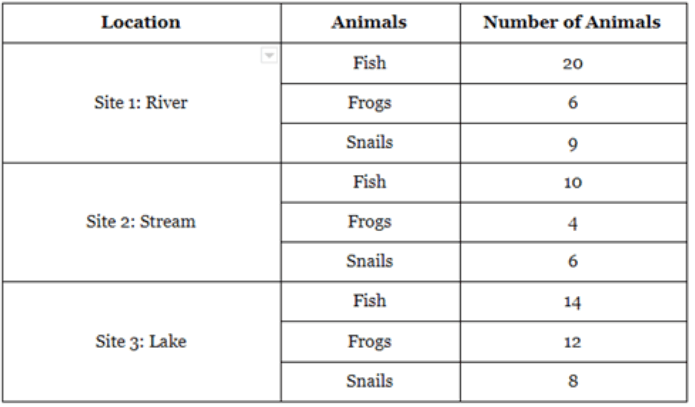
2 snails
What is a vertebrate?
Animals with a backbone and an internal skeleton.
We cannot prevent natural disasters from happening. List 3 examples of natural disasters.
Earthquakes, volcanoes and tsunamis
What causes tsunamis?
Movements of the Earths surface under the ocean such as volcanoes, landslides and earthquakes. A tsunami can also be caused by a meteorite striking the Earth as well.
List 3 types of sampling equipment
Quadrat, pooter, sweep net, pitfall trap
Which location had the most animals?
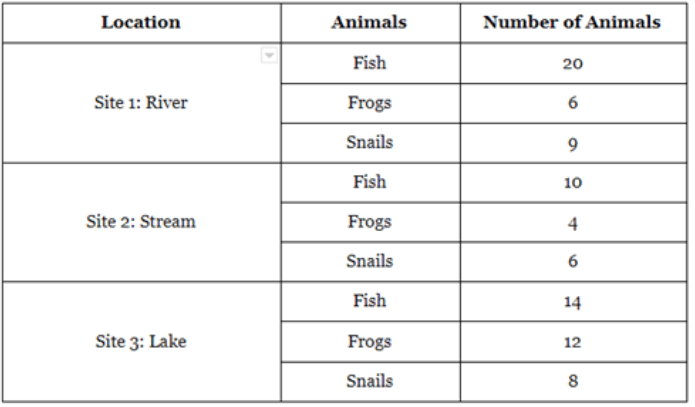
Site 1: River
What is an adaptation that helps a puffer fish survive in its habitat?
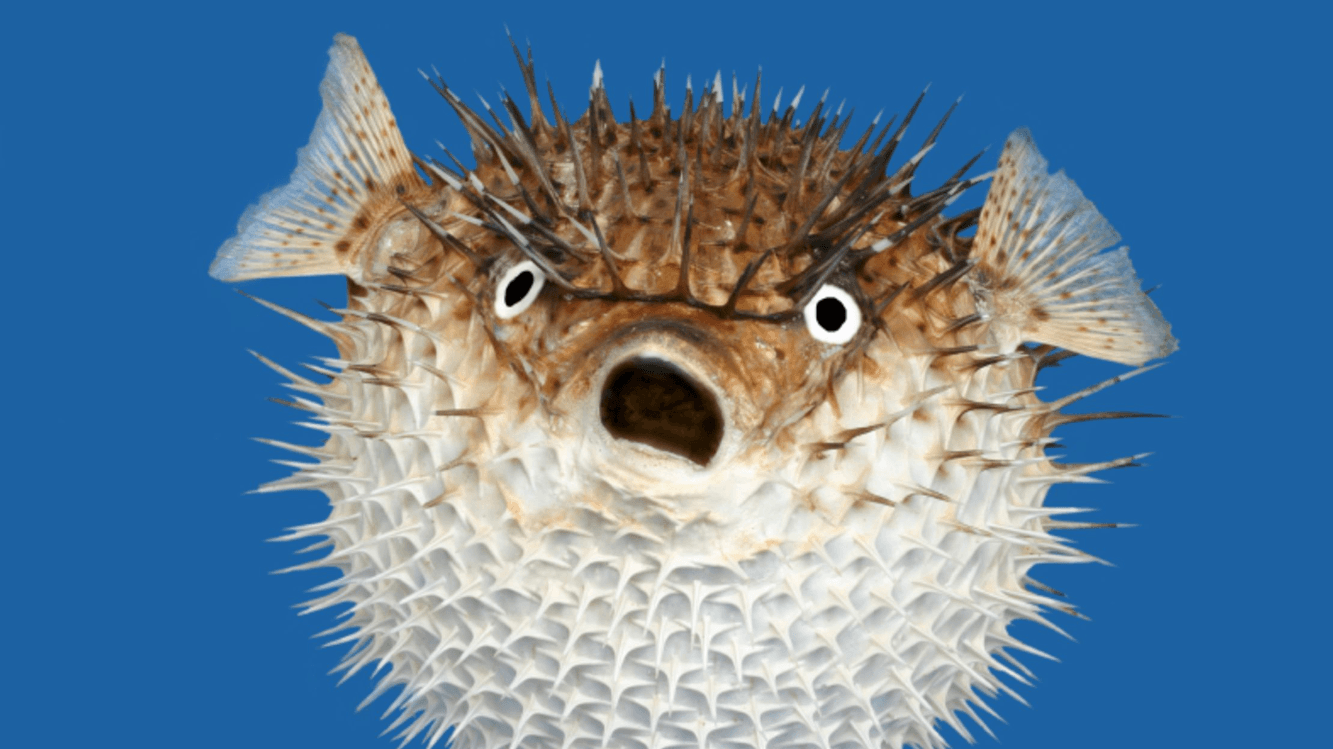
They can make themselves look very big to scare away other creatures, they have fins, they produce a poison that can kill humans.
What are the 3 different types of volcanoes? Describe each.
Active - The volcano has regular activity
Dormant - the volcano has a history of activity but is quiet for now
Extinct - the volcano is not likely to be active ever again
List two advantages and disadvantages of volcanoes
Advantages: Creates new areas of land, make rich fertile soil, gemstones and metals are found near volcanoes, attract visitors to help the local economy, create black sand beaches
Disadvantages: Health problems, lava destroys habitat and building, explosions can cause loss of life, ash and lava can pollute rivers and the oceans, ash can clog up engines of cars and aircraft.
What is this and how would you use it?

This is a pooter. You use a pooter by placing the end of the pooter tube in your mouth and sucking the creature into the pooter. The netting on the end of the tube prevents the creature going into your mouth.
Make a question using the data in the table below
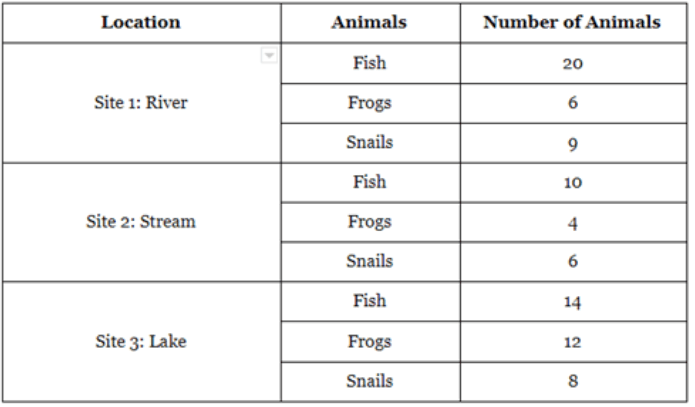
Example: How many frogs were found in all the sites combined? (answer: 22 frogs)
Whats an adaptation that helps a chameleon survive in its habitat?
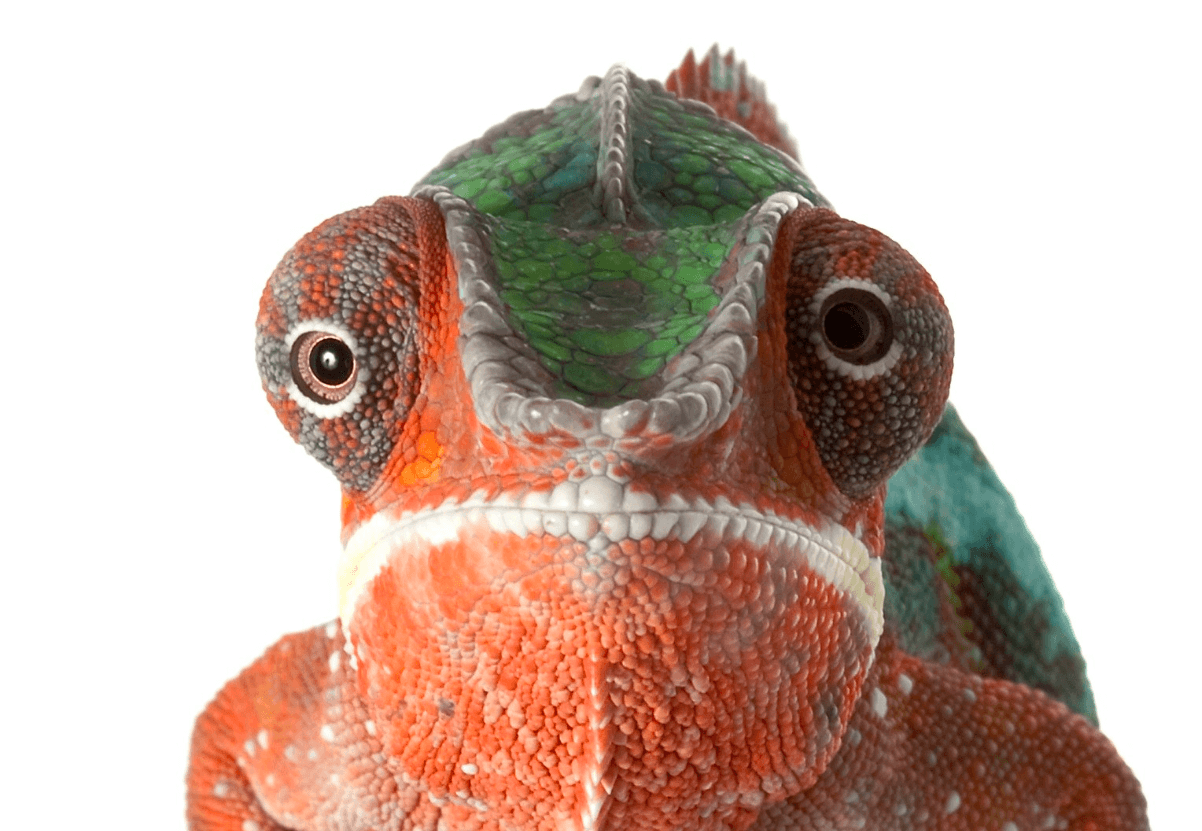
They can change colors so it can hide from other creatures, it has a long, sticky tongue, their eyes can move around to look for food.
What are two ways human activity affects rivers? How can we reduce this?
Fishing, speed boats, littering, dams, etc.
Name 5 parts of a volcano
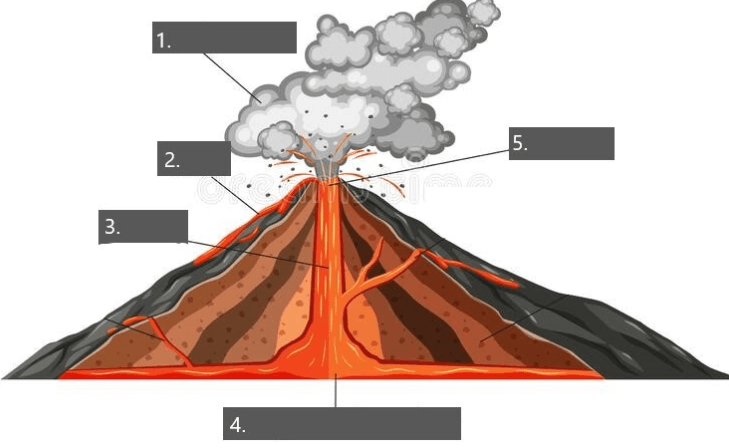
1. ash and gas cloud
2. lava
3. vent
4. magma chamber
5. crater cone